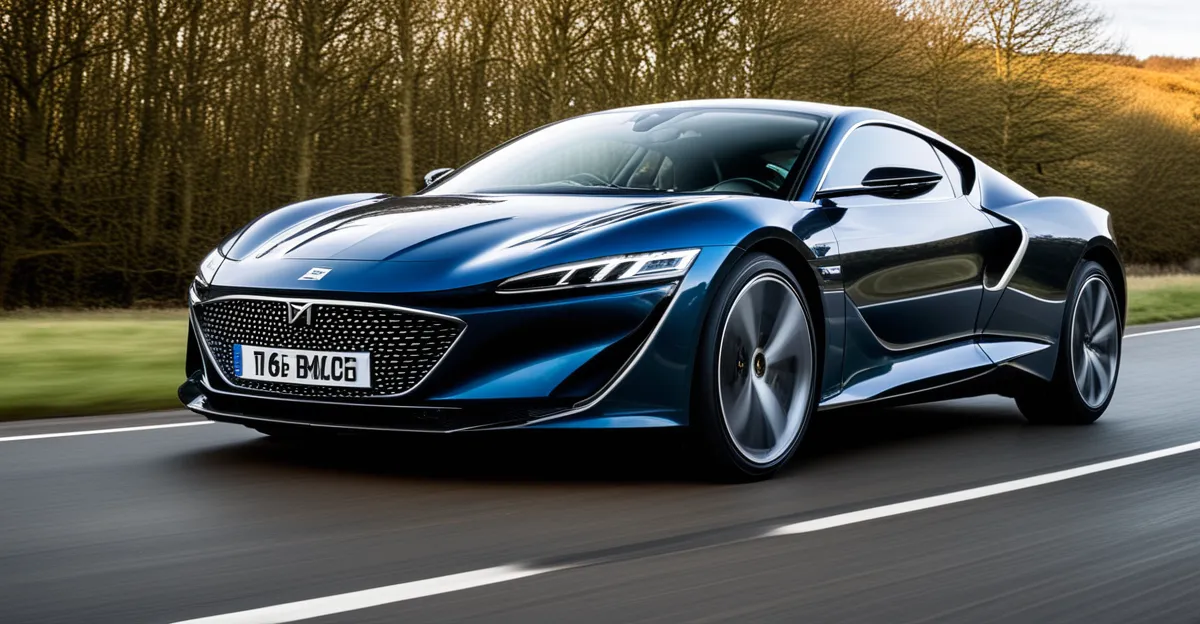The Shifting Landscape of UK Automotive Design
Understanding UK automotive design trends reveals a clear evolution driven by sustainability, technology, and regulation. Industry drivers shaping the next decade include the rapid push towards electrification, stricter emissions standards, and growing consumer demand for innovative aesthetics. This blend is creating a dynamic environment where designers must adapt rapidly.
In terms of future car design UK directions, we observe a move towards streamlined, aerodynamic forms that not only enhance efficiency but also reflect a modern, clean aesthetic. These projected design directions emphasize functionality mixed with bold innovation, anticipating vehicle types that respond to changing urban mobility needs and environmental concerns.
Also to see : What are the challenges of integrating AI in the UK automotive sector?
Government regulations play a critical role in shaping this landscape. UK policies promoting carbon neutrality and stringent safety standards compel designers to embrace eco-friendly and technologically advanced solutions. These regulations often translate into tangible design features such as lighter materials and integration of electric propulsion systems.
Collectively, these forces suggest a promising yet complex future for UK automotive design. Designers balance creativity with practicality, ensuring compliance while pushing the boundaries of what cars will look and feel like in years to come. The convergence of policy, innovation, and consumer preferences clearly marks the path forward.
Also to read : How is digital transformation affecting car sales in the UK?
Technological Advancements Steering Future Designs
Technological innovation is rapidly shaping the future of electric vehicles UK, autonomous systems, and connected car technology UK. The growth and adoption of electric and hybrid vehicles have surged, driven by improvements in battery efficiency and charging infrastructure. These advancements directly influence future car design UK, demanding integration of powertrains that optimize space and performance without compromising style.
Autonomous vehicles introduce a transformative shift. Incorporating sensors, LIDAR, and AI allows cars to navigate safely with minimal human input. This results in evolving cabin layouts and exterior forms tailored for new use cases, emphasizing passenger comfort and functionality over traditional driving controls.
Connected car technology UK is enhancing vehicle-to-vehicle (V2V) and vehicle-to-infrastructure (V2I) communication. This connectivity supports safer, smarter transport ecosystems and enables real-time data exchange, fostering seamless mobility experiences.
UK-focused automotive technology innovations often emphasize integration with urban environments, reflecting government support and consumer demand for intelligent, sustainable transport solutions. As these technologies mature, they will continue to redefine how vehicles look, feel, and operate within the UK automotive design trends landscape.
Prioritising Sustainability and Eco-Friendly Materials
Sustainability takes center stage in green car design UK as manufacturers increasingly adopt sustainable automotive materials. The shift is driven by environmental innovation and the urgent need to reduce carbon footprints. Lightweight materials such as aluminum and carbon fiber composites are replacing traditional steel, significantly lowering vehicle weight and enhancing energy efficiency.
How does lifecycle analysis influence material choices in UK automotive design trends? Lifecycle analysis evaluates environmental impact across a vehicle’s entire existence—from raw material extraction to disposal. Designers use these insights to select recyclable or bio-based components, minimizing waste and emissions throughout production and after the car’s service life ends.
UK environmental policies further accelerate this trend by incentivizing low-impact materials and endorsing circular economy principles. Consumers, too, increasingly demand transparency and eco-friendly features, rewarding brands that embed sustainability in their design ethos.
Focusing on materials that balance durability, performance, and ecological impact aligns with broader future car design UK directives, reflecting a commitment to reducing environmental harm. This material evolution supports the automotive industry forecasts predicting a green transformation in UK vehicle manufacturing, where sustainability emerges not just as a feature but as a fundamental design pillar.
Evolving Aesthetics and Exterior Styling
The future of future car aesthetics in the UK is marked by a clear shift towards sleek, aerodynamic designs that balance style with efficiency. UK car styling trends emphasize clean lines and sculpted forms, reducing drag to improve electric vehicle range and overall performance. This integration of functionality and visual appeal is becoming a defining feature of automotive exterior design.
Aerodynamics, as a crucial influence, guides not just shape but material choice and surface texture. Designers are exploring active aerodynamic elements that adapt in real-time to driving conditions, enhancing both efficiency and vehicle stability. Such innovations respond to the growing need for practical yet visually striking vehicles under current UK automotive design trends.
Concept cars from leading UK design studios provide a glimpse of this evolving aesthetic direction. These previews showcase bold experimentation with lighting, grille-less fascias suited to electric powertrains, and futuristic surface treatments. They reflect a commitment to marrying innovation with the cultural identity of British automotive heritage, projecting what future car design UK might embody in the coming decade.
Together, these design evolutions support automotive industry forecasts that predict increasing consumer expectations for vehicles that are not only sustainable and high-tech but also visually captivating through cutting-edge exterior styling.
Interior Innovation and Enhanced User Experience
The future of future car interiors UK centers on creating intuitive, connected spaces that redefine how drivers and passengers interact with their vehicles. The integration of advanced human-machine interface (HMI) technologies enhances control and safety. For example, digital dashboards are evolving into customizable, augmented reality displays that project essential information directly onto the windshield. This reduces distraction while providing real-time feedback tailored to the driver’s preferences.
Adaptive layouts and smart surfaces further personalize the interior. Touch-sensitive controls, voice commands, and gesture recognition enable seamless interaction, supporting evolving mobility needs such as ride-sharing or autonomous travel. This shift to connected interiors fosters a more engaging, user-friendly environment where technology adapts to individual habits and scenarios.
Passenger comfort remains a core consideration in future car interiors UK, with ergonomic seating, improved noise insulation, and ambient lighting creating a relaxing atmosphere. Designs prioritize multifunctionality to accommodate new vehicle usages, from workspaces to entertainment hubs.
By combining these elements, UK automotive design trends emphasize an interior experience that is both technologically advanced and human-centered, responding to the demands of an increasingly digital and mobile society.
Expert Insights and Industry Predictions
Insight from industry expert opinions highlights that the automotive design forecast UK is shaped by rapid innovation and evolving market demands. Experts emphasize that balancing cutting-edge technology with traditional craftsmanship will be key in maintaining the UK’s distinctive design identity. They foresee increasing collaboration between designers, engineers, and policymakers to meet regulatory challenges and consumer expectations simultaneously.
Recent reports in the UK car market outlook underline that electrification and digitalization will continue to dominate design priorities. Designers expect to integrate more AI-driven features, while maintaining a focus on usability and sustainability. The forecast also predicts a shift toward modular designs adaptable to various powertrains, enhancing flexibility as technology advances.
Challenges discussed by experts include navigating supply chain disruptions and adapting to stringent environmental regulations. However, these obstacles also present opportunities for innovation, pushing UK designers to pioneer smarter, greener solutions aligned with future mobility needs.
In summary, the automotive industry forecasts envision a sector in transformation, where UK design professionals must blend innovation, sustainability, and heritage to thrive in a competitive global market. This outlook encourages a proactive approach to emerging trends and regulatory landscapes shaping future car design UK.











